Special Report
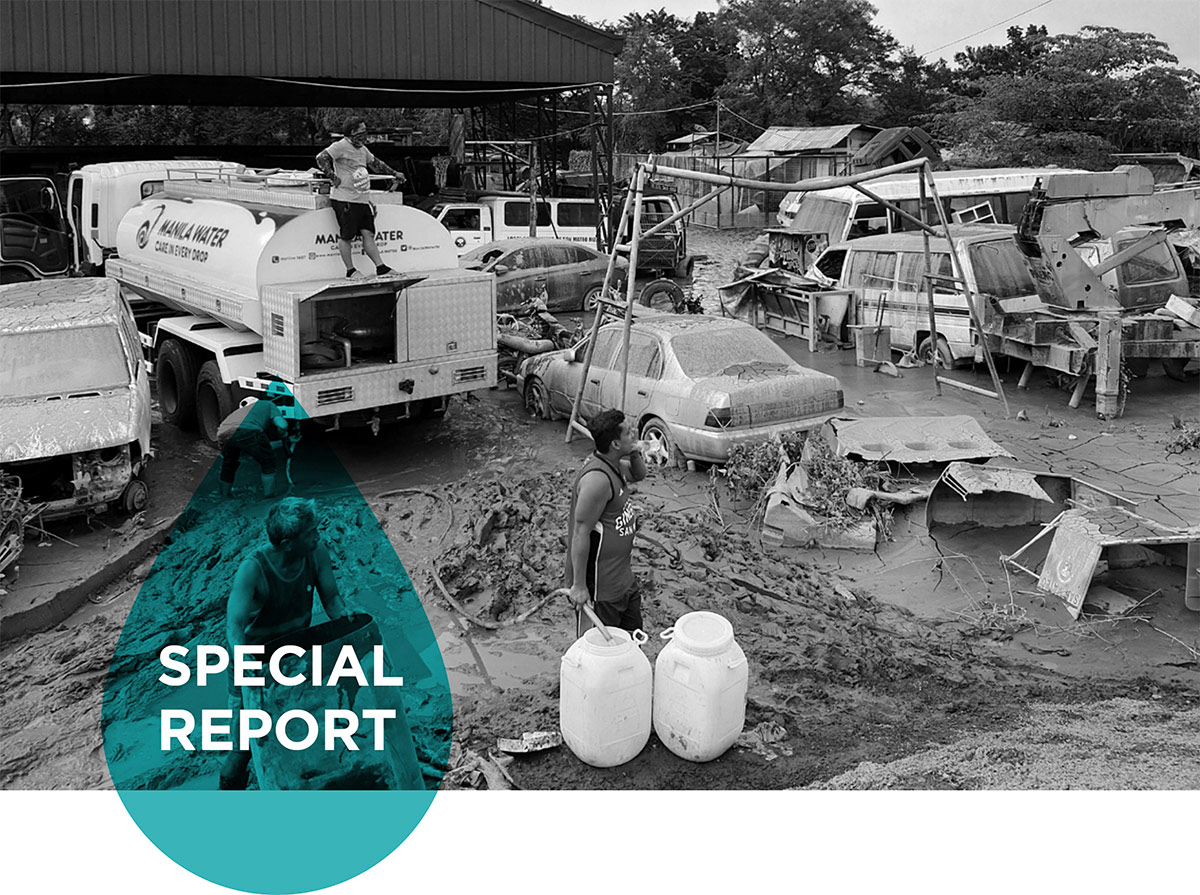
At 2 A.M. on November 10, 2020, Manila Water raised a Company-wide Yellow Alert, signaling immediate preparations for the imminent arrival of Tropical Storm Ulysses as Metro Manila was placed under Tropical Cyclone Signal No. 1.
A few hours later, as the typhoon continuously traversed its westward track, Metro Manila was placed under Tropical Cyclone No. 2; the Company immediately raised alert level to Red.
Normal operating conditions; required no. of equipment for operation + 1 backup
An incident that has no significant business impact. Operation has resumed to normal operation but no Post Incident Report provided.
Incidents localized at the Facility that breached corporate risk appetite; Incident must be managed by a localized Incident Management Team (IMT). Defective/No backup equipment for Critical Equipment (N): Operation on less than the required no. for non-critical equipment
An incident with the possibility of developing into a critical situation; Incident must be managed by a Corporate Incident Management team (IMT)
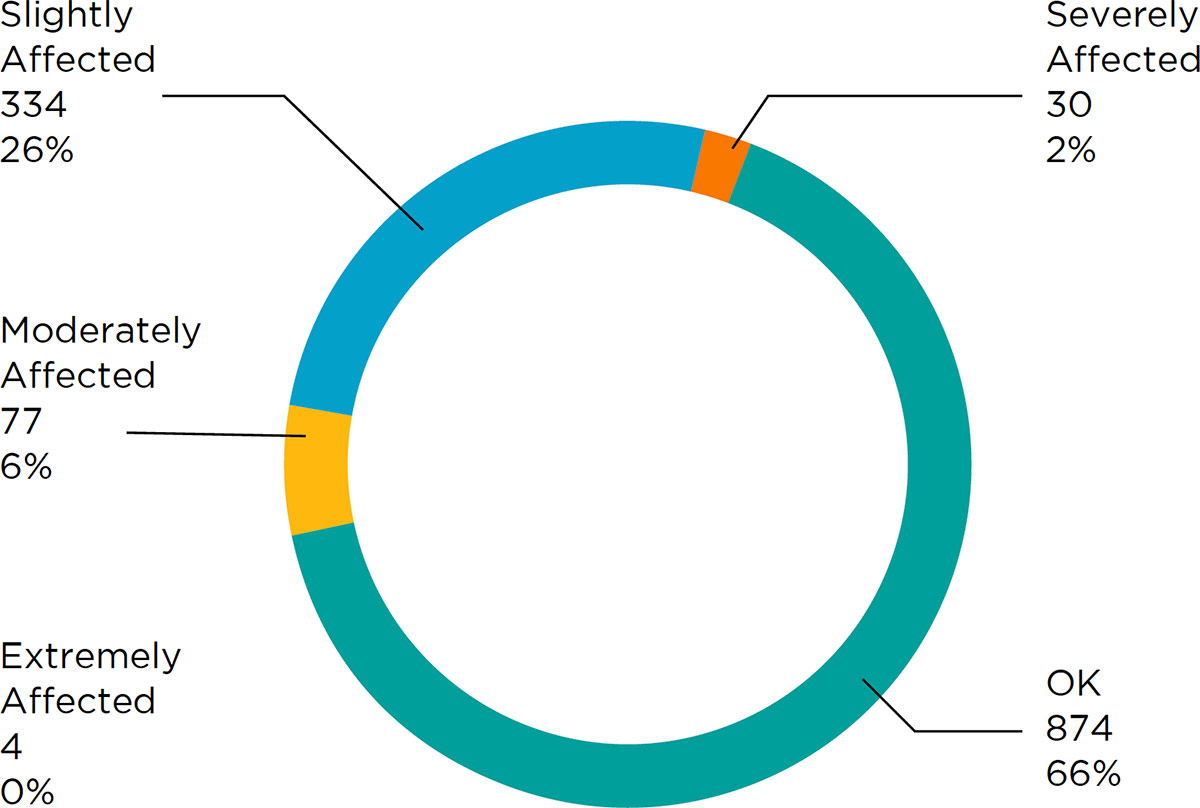
| Category | Employee Status |
|---|---|
| OK | Affected but can manage |
| Slightly Affected | No electricity or internet connection for at least 24 hours |
| Moderately Affected | House or vehicle flooded; house requires massive cleaning from mud and debris; house is generally ok after cleaning |
| Severely Affected | House and vehicle flooded and damaged and no electricity and no internet connection; house requires slight repair after but livable |
| Extremely Affected | House not livable even after flood subsided. Need to renovate or move to a new house |
The following day, November 11, 2020, Ulysses strengthened and was now classified into a typhoon; Signal No. 3 was raised in the western portion of Luzon, including Metro Manila. Packing heavy winds and rains, Ulysses was poised to bring destruction to the areas it will affect as soon as it made landfall.
On the morning of November 12, 2020, the heavy rains brought by Ulysses has already caused flooding in low-lying areas, including those within the East Zone Concession. The City of Marikina was heavily affected, by 7 A.M. the Marikina River water level reached 20.7 meters which prompted the nearest Manila Water facility, the Olandes Sewage Treatment Plant, to shut down. Similarly, flood levels in the Municipality of Cainta also caused one of the Company’s facilities in the area, the Brookside Pumping Station, to shut down. Also, due to the strong winds and flooding, power provider, Meralco, had to implement power outages to avoid electrocution in flooded areas.
As Typhoon Ulysses continued to move westward, Tropical Cyclone signals were downgraded, which prompted the Company to lower its alert level to Yellow in the evening. As a result of the onslaught of the typhoon, the Company experienced damages and disruptions to the operations of the East Zone Concession.
Securing the Safety of Employees
During the onslaught of Typhoon Ulysses, Manila Water ensured that all of its employees were accounted for, triggering a classification system that would identify the magnitude by which the typhoon affected their respective households. Through this, the Company identified that among its over one thousand employees, 445 were affected though on varying degrees.
Rescue operations were also implemented by the Company to those who were extremely affected or stranded due to the flooding. The Marikina North Sewage Treatment Plant was used as an evacuation center for heavily affected families of employees.
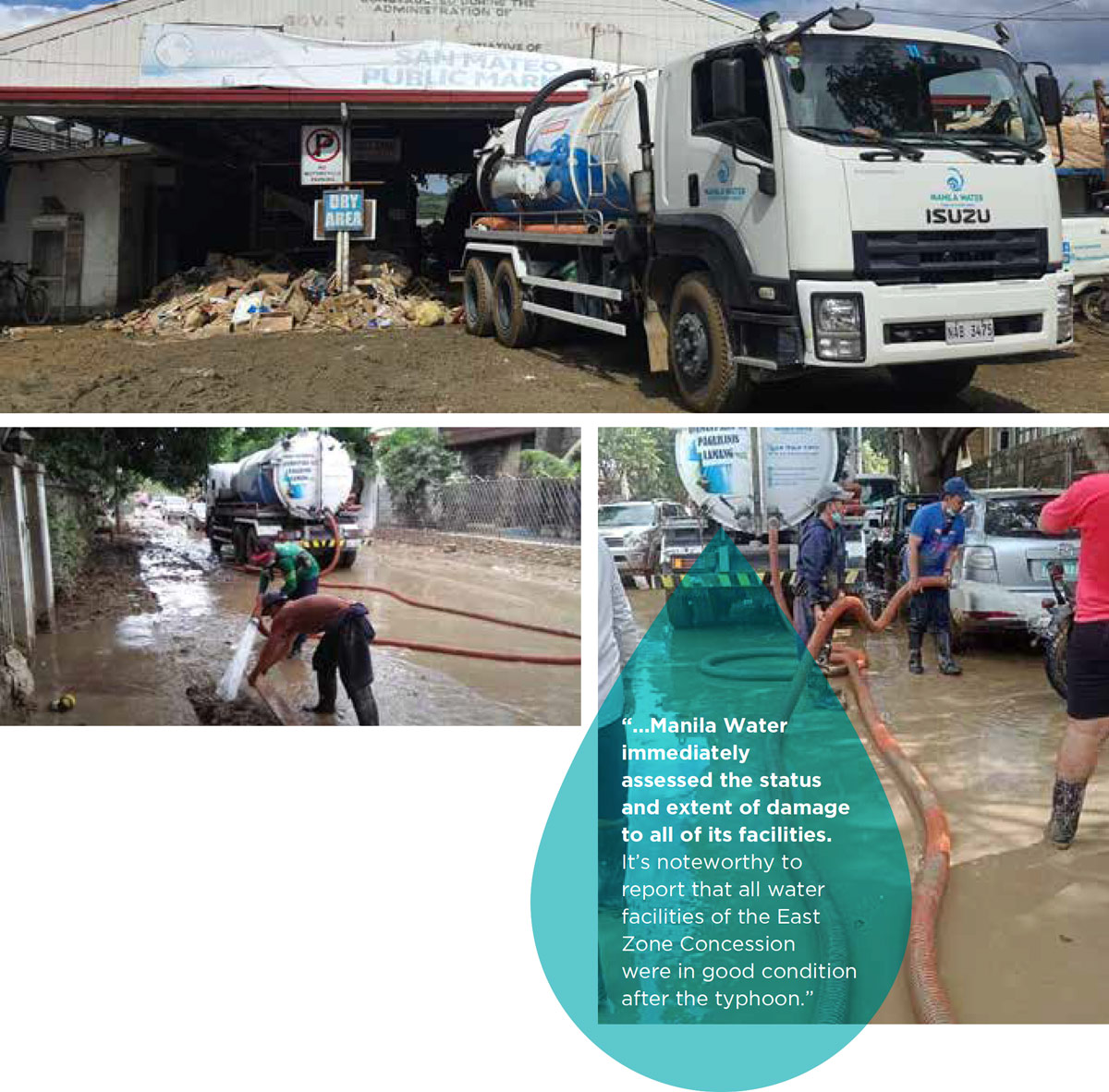
Disrupting East Zone Operations
Due to the flooding and power outages, most, if not all, water and wastewater facilities of Manila Water were affected, several of which were forced to shut down during the typhoon. Also, both Angat and La Mesa Dams breached their spilling levels, reaching over 214 meters and 80 meters, respectively.
Manila Water continuously assessed the conditions of all its water and wastewater facilities over the course and after the onslaught, regularly providing Management reports through the IMRT. The IMRT immediately decided on the courses of action necessary to ensure that immediate response was made. Overall, 5 water and 11 wastewater facilities had to shut down, as well as 31 facilities shifted to genset operations due to power outage. Ongoing projects were also affected by Typhoon Ulysses, damaging project sites across the East Zone Concession.
After the typhoon, Manila Water immediately assessed the status and extent of damage to all of its facilities. It’s noteworthy to report that all water facilities of the East Zone Concession were in good condition after the typhoon. Clean-up operations on all facilities was prioritized with all facility personnel working hand-in-hand to clear the mud and revert back to normal operations.

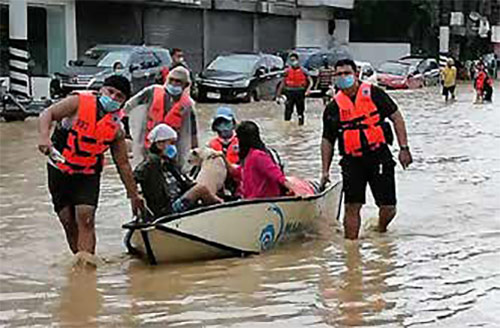
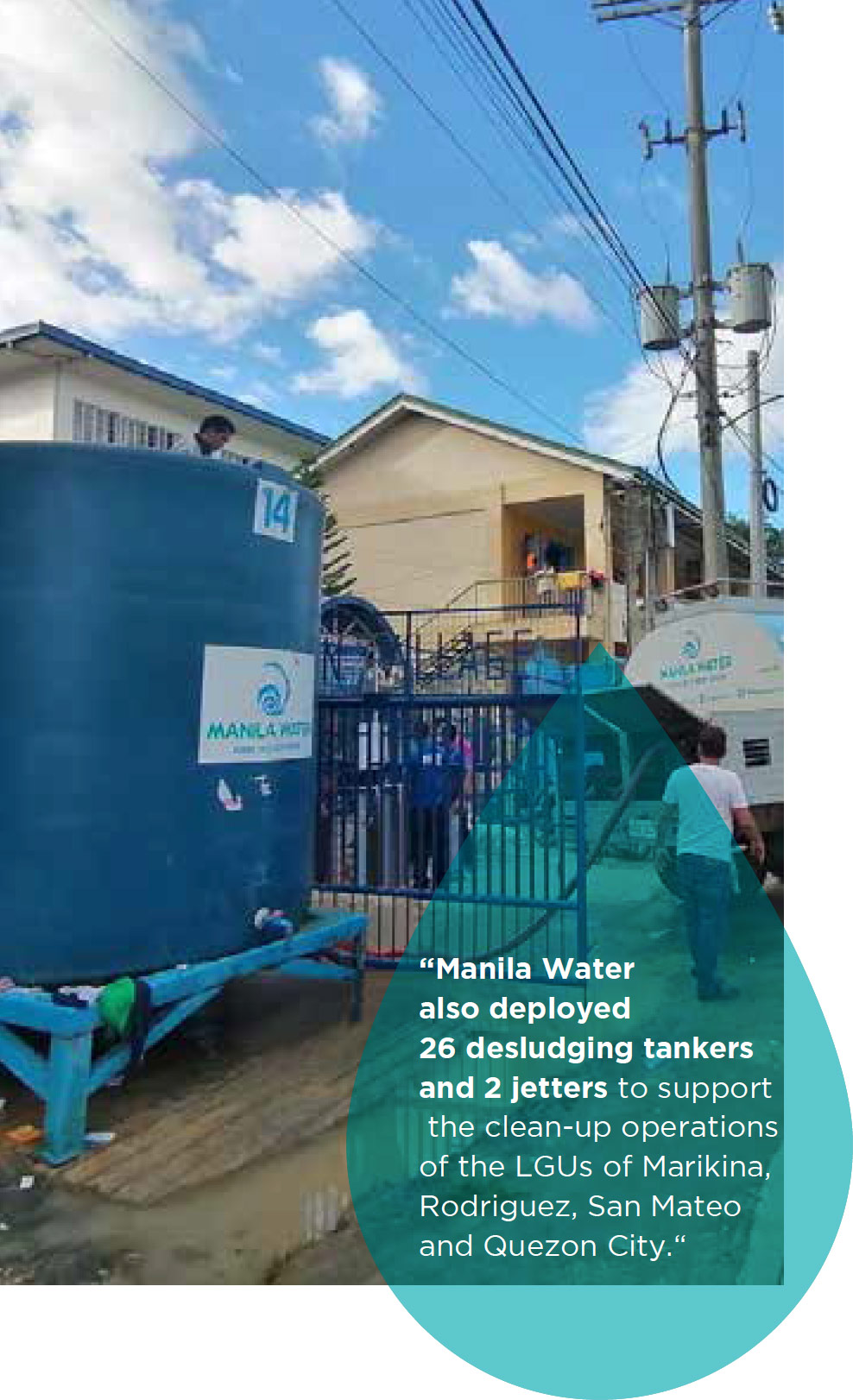
Responding to Customers and Stakeholders
As Manila Water was forced to shut down several of its facilities, as well experienced intermittent power, No Water calls were immediately received by the Company’s business operations which peaked on November 12 and 13, 2020 with 424 and 492 calls, respectively. Over 300,000 customers were affected by the flood and almost 200,000 customers experienced no water coming from the cities of Antipolo, Marikina, Pasig, Quezon City and Taguig, as well as from the municipalities of Cainta, Rodriguez, San Mateo and Taytay.
In coordination with Local Government Units (LGU), the Company augmented the water supply situation, as well as respond to the needs of those who were severely affected. Manila Water deployed 33 water tankers and 10 static tanks to evacuations centers and areas with no water. The deployment of these water tankers was concentrated in the severely flooded area of Marikina and San Mateo, while the rest were deployed in the other Rizal towns and Metro Manila cities. Also, billing and collection activities were disrupted in over 41,000 customers in severely affected areas due to heavy obstructions on-site which resulted in average billing during the period.
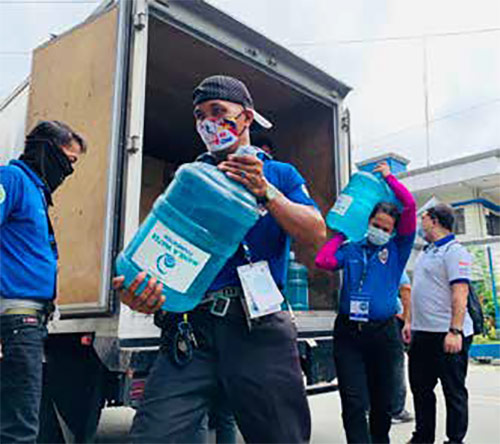
Aside from the assistance of the Company in providing water to evacuation centers, Manila Water also deployed 26 desludging tankers and 2 jetters to support the clean-up operations of the LGUs of Marikina, Rodriguez, San Mateo and Quezon City.
| City/Municipality | Desludging Tanker Deployment | |
|---|---|---|
| Count | Location | |
| Marikina | 14 | Brgy. Malanday, Brgy. IVC, Brgy Sto. Nino, Brgy. Calumpang, Brgy Tanong, Riverbanks Mall, Brgy. Barangka, Brgy. Sta. Elena, Brgy. San Roque, St. Gregory Subdivision, Marikina Polytechnic College, Tumana, Provident Village |
| Rodriguez | 4 | ERES, Kasiglahan, Brgy. San Isidro, Dela Costa |
| San Mateo | 4 | San Mateo Public Market, Malanday Elementary School, BJMP, Hall of Justice, Goldriver, Guitnang Bayan 2, Estrella Height, Becco Compound |
| Quezon City | 4 | Vista Real Subd. |
| Total | 26 | |
| City/Municipality | Jetter Deployment | |
|---|---|---|
| Count | Location | |
| Marikina | 1 | Tanong High School, Marikina Sports Center, CEMO |
| Rodriguez | 1 | Dela Costa |
| Total | 2 | |